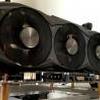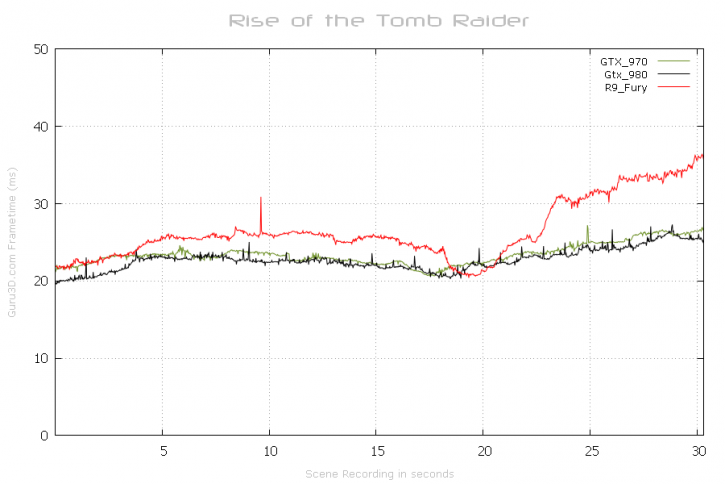FCAT Frame Experience Analysis Rise of the Tomb Raider
With a benchmark technology called FCAT on the following few pages, we will look into Frame Experience Analysis. Basically with the charts shown we are trying to show you graphics anomalies like stutters and glitches in a plotted chart. Lately there has been a new measurement introduced, latency measurements. Basically it is the opposite of FPS.
- FPS mostly measures performance, the number of frames rendered per passing second.
- Frametime AKA Frame Experience recordings mostly measures and exposes anomalies - here we look at how long it takes to render one frame. Measure that chronologically and you can see anomalies like peaks and dips in a plotted chart, indicating something could be off.
| Frame time in milliseconds |
FPS |
| 8.3 | 120 |
| 15 | 66 |
| 20 | 50 |
| 25 | 40 |
| 30 | 33 |
| 50 | 20 |
| 70 | 14 |
We have a detailed article (read here) on the new FCAT methodology used, and it also explains why we do not use FRAPS anymore.
Frametime - Basically the time it takes to render one frame can be monitored and tagged with a number, this is latency. One frame can take say 17 ms. Higher latency can indicate a slow frame-rate, and weird latency spikes indicate a stutter, jitter, twitches; basically anomalies that are visible on your monitor.
What Do These Measurements Show?
Basically, what these measurements show are anomalies like small glitches and stutters that you can sometimes (and please do read that well, sometimes) see on screen. Below I'd like to run through a couple of titles with you. Bear in mind that Average FPS matters more than frametime measurements. It's just an additional page or two of information that from now on we'll be serving you.
Rise of the Tomb Raider Frame Experience Analysis
Above, a percentile chart of the 30 seconds @ 2560x1440. In this particular chart we plot FPS and place it in relation to percentiles.
- For the 970 - 50% of the time measured frames is close to 43 FPS. This you can consider the average frame-rate.
Above, the card at 2560x1440. On this 30 second run the graphics card manages very well; as you can see there are no stutters recorded. This is near perfect rendering (frame-time wise lower is better).
I'll add one extra FCAT, in here you can see the GeForce GTX 980 and Radeon R9 Fury added. Just a little extra for comparisons sake.




